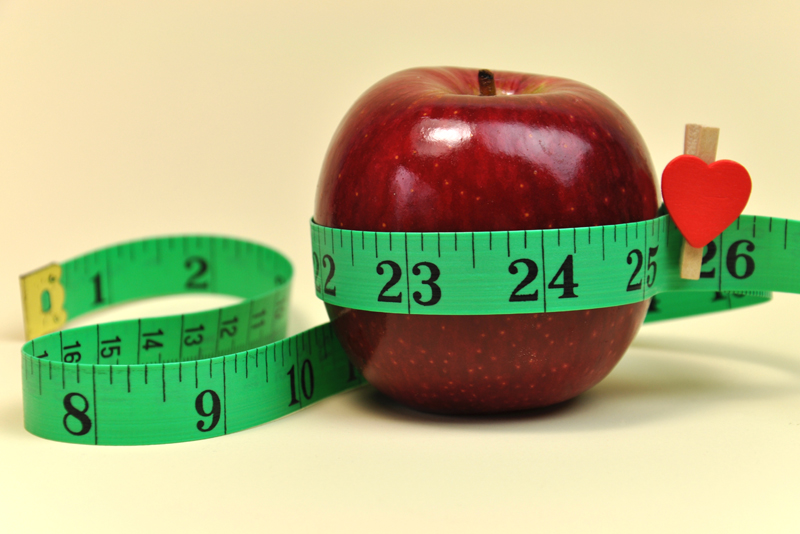Bioelectric Impedance Scales - How They Work

Bioelectric Impedance Scales allow you to stand on a scale and determine not only your weight but also your muscle mass and bone density. How does the scale figure out all those things?
 First, the basics. You have BARE feet. You stand on the scale. The scale determines your weight through normal scale technology. But in addition, it sends a tiny pulse of electricity into one foot. The normal behavior of electricity is to seek out the ground again. So that pulse goes up through your body and out through the other foot. Since both feet are on metal plates in the scale, it can figure out how long that pulse takes.
First, the basics. You have BARE feet. You stand on the scale. The scale determines your weight through normal scale technology. But in addition, it sends a tiny pulse of electricity into one foot. The normal behavior of electricity is to seek out the ground again. So that pulse goes up through your body and out through the other foot. Since both feet are on metal plates in the scale, it can figure out how long that pulse takes.
You tell the scale - through its interface - how tall you are. So the scale knows the distance this pulse has to go to get from one place to the other. So it knows
* the distance the pulse has to move
* the speed the pulse takes to get there
That means the scale can now figure out how dense the material is that the pulse went through. Electrical signals go quickly through muscle, but slowly through fat. So the faster the signal moves, the more muscular you are.
For example, say you are 6' tall and weigh 300 pounds. The scale makers have run all sorts of tests and know that someone that size and weight who is 30% fat would have a travel speed of X, someone that size and weight who is 40% fat would have a travel speed of Y, and someone that size and weight who is 50% fat would have a travel speed of Z. This is a bit simplistic of an example, but you can see how as long as they know your height and weight, and how fast the signal moves, it can tell them your fat / muscle balance.
I am still curious how this could tell the scale anything about the BONE amount in your system, though. My only guess is that the scale is then using some sort of concordance chart to determine the bone value. That is, by this point the scale knows a lot about you. It knows how tall you are. How heavy you are. How muscular you are. By all of that it might be able to make a very reasonable guess at how solid your bones are in order to hold up that configuration of human.
I have put queries in to both Taylor and Tanita to verify this.

Lisa Shea's Library of Low Carb Books
 First, the basics. You have BARE feet. You stand on the scale. The scale determines your weight through normal scale technology. But in addition, it sends a tiny pulse of electricity into one foot. The normal behavior of electricity is to seek out the ground again. So that pulse goes up through your body and out through the other foot. Since both feet are on metal plates in the scale, it can figure out how long that pulse takes.
First, the basics. You have BARE feet. You stand on the scale. The scale determines your weight through normal scale technology. But in addition, it sends a tiny pulse of electricity into one foot. The normal behavior of electricity is to seek out the ground again. So that pulse goes up through your body and out through the other foot. Since both feet are on metal plates in the scale, it can figure out how long that pulse takes.You tell the scale - through its interface - how tall you are. So the scale knows the distance this pulse has to go to get from one place to the other. So it knows
* the distance the pulse has to move
* the speed the pulse takes to get there
That means the scale can now figure out how dense the material is that the pulse went through. Electrical signals go quickly through muscle, but slowly through fat. So the faster the signal moves, the more muscular you are.
For example, say you are 6' tall and weigh 300 pounds. The scale makers have run all sorts of tests and know that someone that size and weight who is 30% fat would have a travel speed of X, someone that size and weight who is 40% fat would have a travel speed of Y, and someone that size and weight who is 50% fat would have a travel speed of Z. This is a bit simplistic of an example, but you can see how as long as they know your height and weight, and how fast the signal moves, it can tell them your fat / muscle balance.
I am still curious how this could tell the scale anything about the BONE amount in your system, though. My only guess is that the scale is then using some sort of concordance chart to determine the bone value. That is, by this point the scale knows a lot about you. It knows how tall you are. How heavy you are. How muscular you are. By all of that it might be able to make a very reasonable guess at how solid your bones are in order to hold up that configuration of human.
I have put queries in to both Taylor and Tanita to verify this.

Lisa Shea's Library of Low Carb Books

Related Articles
Editor's Picks Articles
Top Ten Articles
Previous Features
Site Map
Follow @LisaLowCarb
Tweet
Content copyright © 2023 by Lisa Shea. All rights reserved.
This content was written by Lisa Shea. If you wish to use this content in any manner, you need written permission. Contact Lisa Shea for details.










